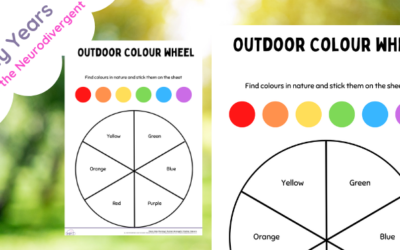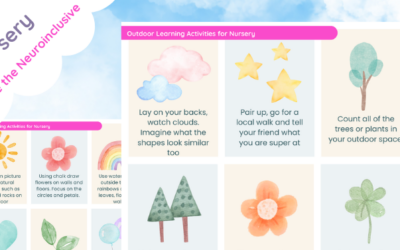Forest School Scavenger Hunt🌲 Discover, explore, and connect with nature the forest school way! Bring your forest...
Outdoor Learning Colour I Spy
Apr 4, 2025
Outdoor Learning I Spy🔍 Spot, search, and learn with nature! Turn any outdoor space into a playful learning adventure...
Outdoor Learning Colour Wheel
Apr 4, 2025
Outdoor Learning Colour Wheel🎨 Bringing colour and curiosity to outdoor learning! Make nature your classroom with our...
Outdoor Learning Colour Scavenger Hunt
Apr 4, 2025
Introducing the Outdoor Learning Colour Scavenger Hunt—a vibrant and engaging activity designed to captivate...
Outdoor Learning Scavenger Hunt (Toddlers)
Apr 4, 2025
Outdoor Learning Scavenger Hunt (Toddlers)Big discoveries for little explorers! Introduce your toddler to the wonders...
Outdoor Learning Scavenger Hunt
Apr 4, 2025
Outdoor Learning Scavenger HuntExplore nature. Spark curiosity. Learn through play. Take learning beyond the classroom...
Bug Outdoor Learning Scavenger Sheet
Apr 4, 2025
Outdoor Learning Scavenger Hunt Tick SheetInspire curiosity. Explore the outdoors. Learn through play. Make outdoor...
Outdoor Learning Activities for Nursery – Resource Pack
Mar 29, 2025
Outdoor Learning Activities for Nursery – Resource Pack 🌿✨ Bring early years learning to life with our Outdoor...
Outdoor Learning Safety Poster
Mar 29, 2025
Outdoor Learning Safety Poster Keep your outdoor learning sessions safe, clear, and confident with our vibrant Outdoor...
Outdoor Learning Risk Assessments: (Handout)
Mar 29, 2025
🌿 Outdoor Learning Risk Assessments: Top Tips (Information Sheet) Confidence, Clarity, and Control—Every Time You Step...
Outdoor Learning Safety Advice (CPD Handout)
Mar 29, 2025
Outdoor Learning Safety Advice (CPD Handout)Empowering Educators to Lead Safe and Inspiring Outdoor Learning Designed...
Outdoor Learning CPD Guidance (Handout )
Mar 26, 2025
Product Description: Outdoor Learning Guidance Handout Title: Outdoor Learning Guidance Handout – A Comprehensive...
Outdoor Multiplication Lesson Plans
Mar 18, 2025
Outdoor Multiplication Lesson Plans – A Fun and Engaging Way to Teach Maths Transform Maths Learning with Outdoor...
World War One Lesson Plan
Mar 18, 2025
World War One Outdoor Learning Lesson Plan Engage Students with Hands-On History Bring World War One history to life...
Forest School Games Phase Six
Feb 11, 2025
Forest School Games: Phase 6 Phonics Make Phase 6 phonics an outdoor adventure! Forest School Games: Phase 6 Phonics...
Forest School Games Phase Five
Feb 11, 2025
Forest School Games: Phase 5 Phonics Take phonics learning outdoors with hands-on, nature-based games! Forest School...
Forest School Phase 2 Phonics
Feb 10, 2025
Make Phase 2 phonics fun, engaging, and active with our Forest School Games for Early Literacy. Designed to support...
Forest School Phonics Games (Phase One)
Feb 10, 2025
Engage young learners in phonics through nature-inspired, multi-sensory Forest School games. Our Phase 1 Phonics...





























